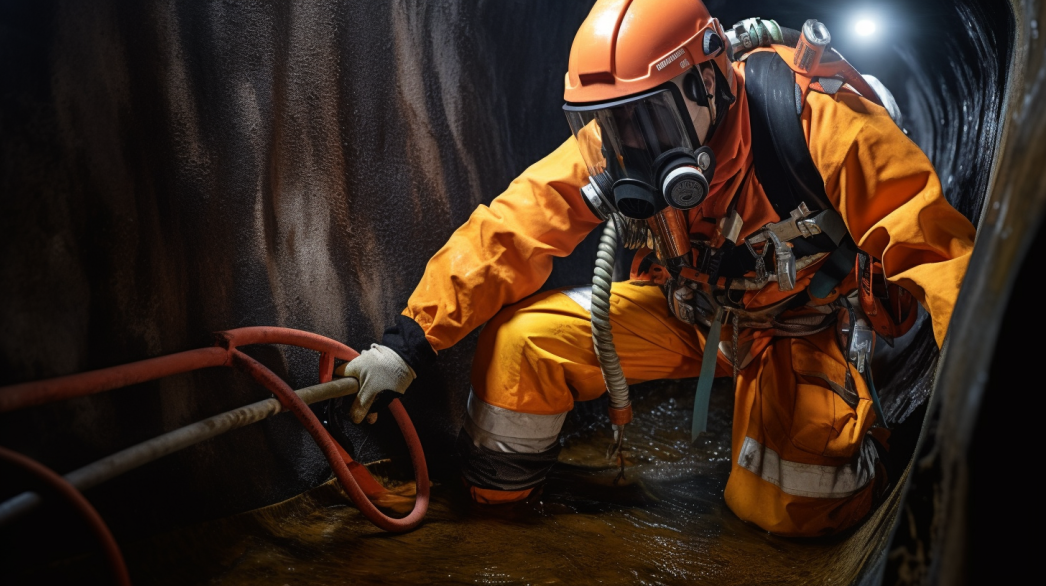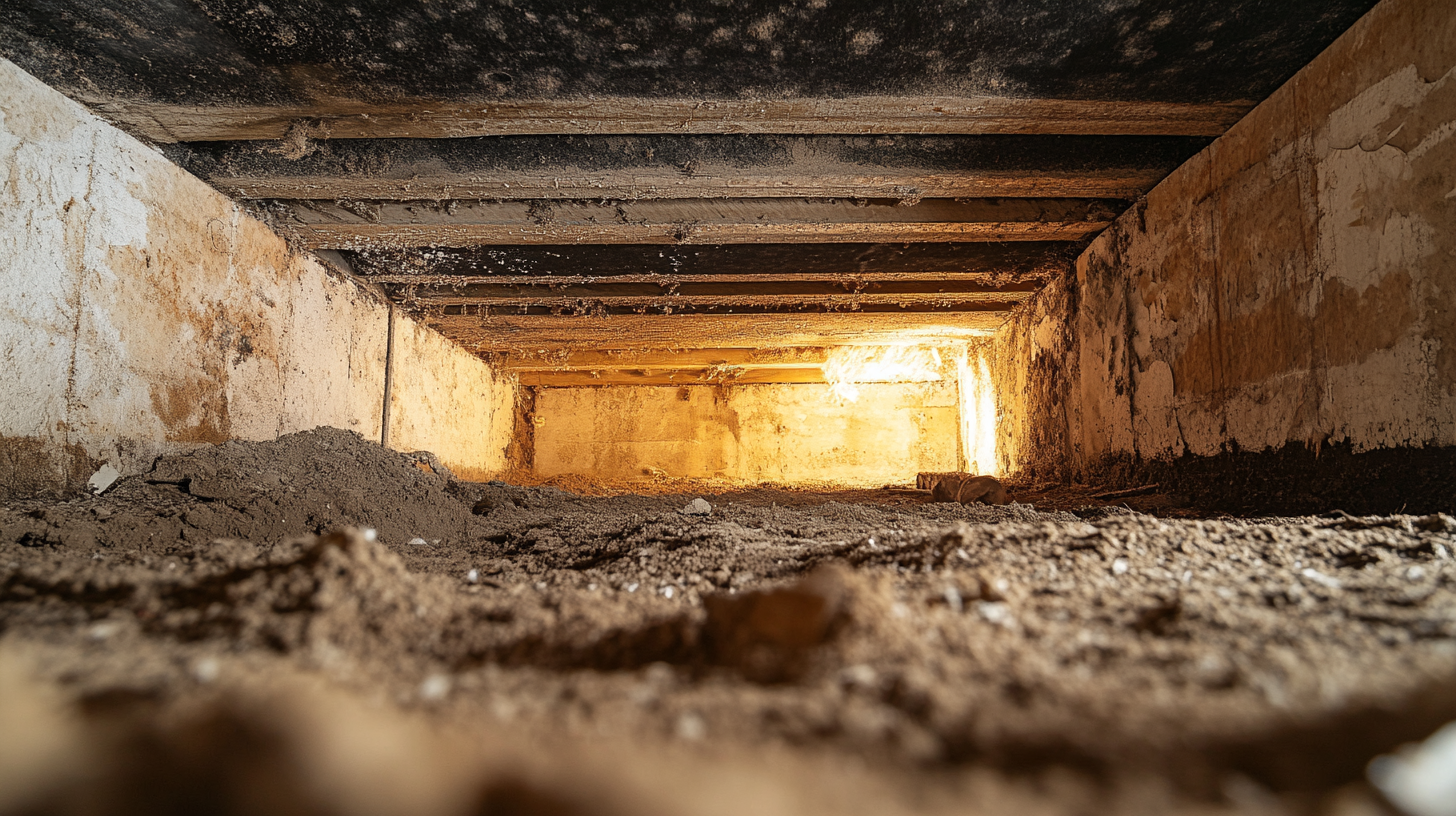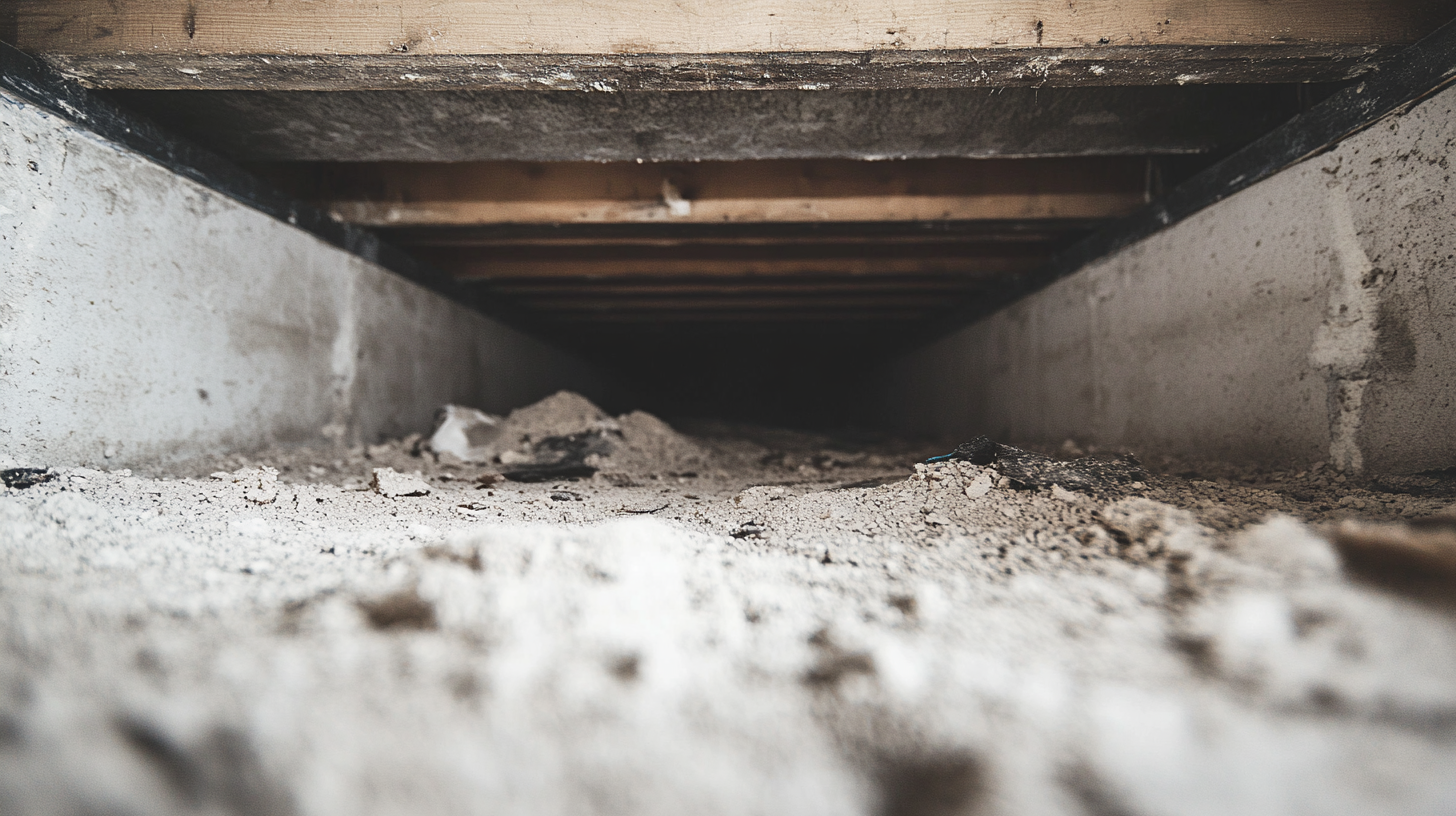Heat Stress Prevention for Restoration Workers in Hot Environments

Restoration projects often demand intensive physical labor, frequently in environments where temperature control is challenging. Whether working outdoors under the scorching sun or in confined spaces with poor ventilation, workers are at significant risk of experiencing heat stress. This condition, caused by the body’s inability to cope with excessive heat, can lead to severe health issues, including heat exhaustion, heatstroke, and even death if not properly managed.
Preventing heat stress is not just a matter of comfort—it is a critical aspect of occupational safety that directly impacts the health, productivity, and well-being of workers. In restoration projects, where deadlines are tight and the work is physically demanding, the risks associated with heat stress are heightened. Therefore, it is essential to implement comprehensive strategies to protect workers from the dangers of excessive heat exposure. This blog will explore the importance of preventing heat stress in restoration projects, offering insights into the risks, symptoms, and effective preventive measures that can safeguard workers and ensure a safe working environment.
Understanding Heat Stress
Heat stress is a critical concern in restoration projects, where workers are often exposed to challenging environmental conditions. Understanding what heat stress is, its causes, and the potential health risks it poses is essential for developing effective prevention strategies that protect workers' well-being.
Definition and Causes
Heat Stress:
Heat stress occurs when the body is unable to cool itself effectively, leading to a range of physical symptoms and potentially severe health issues. It is the result of the body absorbing more heat than it can dissipate, which can happen quickly in high-temperature environments common in many restoration projects.
Causes:
Several factors contribute to the development of heat stress, particularly in the context of restoration work:
- Prolonged Work in Hot Environments: Workers often spend extended periods in environments where temperatures are elevated, whether due to direct sunlight, confined spaces with poor ventilation, or heat generated by machinery. The longer the exposure, the greater the risk of heat stress.
- Inadequate Hydration: Maintaining proper hydration is crucial in preventing heat stress. Workers who do not drink enough fluids lose the ability to sweat effectively, which impairs the body's natural cooling mechanisms. This can rapidly lead to dehydration and heat-related illnesses.
- Heavy Protective Clothing: In many restoration projects, workers are required to wear protective clothing and equipment. While essential for safety, this gear can trap heat and reduce the body's ability to cool down, increasing the risk of heat stress, especially in already hot environments.
Understanding these causes is the first step in mitigating the risks associated with heat stress and ensuring that preventive measures are appropriately targeted.
Symptoms and Health Risks
Symptoms:
Recognizing the symptoms of heat stress is vital for early intervention and preventing more serious health outcomes. Common symptoms include:
- Headache: A persistent headache is often one of the first signs that the body is struggling to cope with heat.
- Dizziness and Weakness: As the body overheats, individuals may experience dizziness and a sense of weakness or fatigue, making it difficult to continue working safely.
- Nausea: Nausea or an upset stomach can occur as the body tries to cope with the excessive heat.
- Excessive Sweating: Sweating is the body's primary method of cooling itself, but excessive sweating without adequate fluid replacement can lead to dehydration and exacerbate heat stress.
Health Risks:
If not addressed promptly, the symptoms of heat stress can escalate into more severe health conditions:
- Heat Exhaustion: This condition occurs when the body loses too much water and salt through excessive sweating. Symptoms include heavy sweating, rapid pulse, and cool, moist skin. If untreated, heat exhaustion can lead to heatstroke.
- Heat Stroke: Heatstroke is a life-threatening condition that occurs when the body's temperature regulation system fails, leading to a rapid rise in body temperature. Symptoms include confusion, loss of consciousness, and hot, dry skin. Heatstroke requires immediate medical attention as it can quickly result in damage to vital organs or death.
- Dehydration: Prolonged exposure to heat without adequate hydration leads to dehydration, which impairs physical performance and can contribute to the development of heat-related illnesses. Dehydration affects the body's ability to regulate temperature and can cause serious complications if not addressed.
Understanding the symptoms and health risks associated with heat stress is crucial for ensuring that workers and supervisors can identify and respond to heat-related issues promptly. By being aware of the warning signs and potential dangers, steps can be taken to prevent heat stress from escalating into more severe conditions, safeguarding the health and safety of all workers involved in restoration projects.
Initial Assessment and Planning
Effective management of heat stress in restoration projects begins with a thorough initial assessment and careful planning. This stage is crucial for identifying potential heat-related hazards and developing strategies to mitigate risks, ensuring that workers can operate safely even in challenging conditions.
Site Inspection
A detailed site inspection is the first step in assessing the potential for heat stress at a restoration worksite. This process involves a close examination of the environmental conditions and physical layout of the site to identify areas where workers may be at heightened risk of heat-related issues.
Evaluate Worksite Conditions for Potential Heat Hazards: During the site inspection, assess all aspects of the work environment that could contribute to heat stress. This includes evaluating the temperature, humidity levels, and the presence of heat-generating equipment or materials. Understanding these conditions allows for a more accurate assessment of the risks posed by heat.
Identify Areas with Poor Ventilation or High Sun Exposure: Special attention should be given to identifying specific areas of the worksite that are particularly vulnerable to heat hazards. Areas with poor ventilation, such as confined spaces or rooms without adequate airflow, can trap heat and quickly become dangerous. Similarly, outdoor work areas with high sun exposure, especially those with limited shade, can lead to rapid overheating. Identifying these hotspots is critical for planning targeted interventions to protect workers.
Thorough site inspections are essential for understanding the unique heat-related challenges of each worksite, enabling the development of effective prevention strategies tailored to specific conditions.
Risk Assessment
Following the site inspection, a comprehensive risk assessment should be conducted to evaluate the severity and likelihood of heat stress risks. This assessment is crucial for prioritizing safety measures and ensuring that resources are allocated effectively to protect worker health.
Assess the Severity and Likelihood of Heat Stress Risks: The risk assessment process involves evaluating how severe the potential heat stress risks are and how likely they are to occur under normal working conditions. Factors to consider include the duration of exposure to high temperatures, the physical demands of the tasks being performed, and the effectiveness of existing cooling or ventilation systems. By quantifying these risks, safety managers can better understand the potential impact on workers and the urgency of implementing preventive measures.
Prioritize Measures Based on Potential Impact on Worker Health: Once the risks have been assessed, they should be prioritized based on their potential impact on worker health. The most critical risks—those that pose the greatest threat to safety, such as the risk of heatstroke in areas with extreme temperatures—should be addressed first. This prioritization ensures that the most dangerous conditions are mitigated promptly, reducing the likelihood of serious heat-related incidents. Measures might include adjusting work schedules to avoid the hottest parts of the day, increasing hydration breaks, or installing temporary shade structures.
By systematically assessing and prioritizing heat stress risks, restoration projects can be planned with worker safety as a top priority. This proactive approach helps prevent heat-related illnesses and ensures that workers are protected from the dangers of excessive heat exposure.
Personal Protective Equipment (PPE)
In restoration projects, particularly those conducted in hot environments, the proper selection and use of Personal Protective Equipment (PPE) are critical for safeguarding workers against the dangers of heat stress. PPE not only protects workers from the immediate physical hazards of the job but also plays a vital role in managing the body's temperature and preventing heat-related illnesses.
Essential PPE for Hot Environments
Choosing the right PPE for hot environments is crucial to reducing the risk of heat stress. The focus should be on materials and designs that minimize heat retention while still providing necessary protection.
Lightweight, Breathable Clothing: In hot environments, the choice of clothing can significantly impact a worker's ability to manage heat. Lightweight, breathable fabrics that allow air circulation are essential to reduce heat retention and promote cooling. These materials help wick sweat away from the skin, facilitating evaporation, which is a key mechanism for the body to dissipate heat. By wearing clothing that balances protection with breathability, workers can stay cooler and more comfortable during physically demanding tasks.
Cooling Vests: For extreme temperatures or particularly strenuous activities, cooling vests can be an effective solution. These vests are designed with materials that absorb and slowly release cooling agents, helping to lower the body's core temperature. By providing localized cooling to critical areas of the body, these vests help prevent the onset of heat stress, allowing workers to maintain their performance and focus even in challenging conditions.
Sun Protection: In outdoor environments with high sun exposure, protecting the skin and eyes from harmful UV rays is essential. Sun protection measures should include wide-brimmed hats to shield the face and neck, sunglasses with UV protection to safeguard the eyes, and sunscreen with a high SPF to prevent sunburn. These protective items help reduce the risks associated with prolonged sun exposure, such as heat-related illnesses and skin damage.
Selecting PPE that addresses the specific challenges of hot environments ensures that workers are both protected and comfortable, reducing the likelihood of heat stress and enhancing overall safety on the job.
Usage and Maintenance
The effectiveness of PPE in preventing heat stress is heavily dependent on its proper usage and maintenance. Ensuring that PPE is correctly fitted, regularly inspected, and appropriately used is key to maintaining its protective capabilities.
Ensure Proper Fitting and Regular Inspection of PPE: PPE must be properly fitted to each worker to provide maximum protection and comfort. Ill-fitting gear can not only reduce its effectiveness but can also contribute to heat retention or restrict movement, increasing the risk of heat stress. Regular inspections of PPE are also necessary to check for signs of wear and tear, damage, or contamination that could compromise its protective properties. Any PPE that is damaged or no longer fits properly should be replaced immediately to ensure ongoing protection.
Train Workers on Correct Usage and Maintenance: Training is essential to ensure that workers understand how to correctly use and maintain their PPE. This training should cover the proper procedures for donning (putting on) and doffing (taking off) PPE to avoid contamination, as well as the correct methods for cleaning and storing the equipment to prolong its lifespan. Workers should also be educated on the importance of reporting any issues with their PPE, such as discomfort, poor fit, or damage, so that adjustments or replacements can be made promptly.
By emphasizing proper usage and maintenance, the risks associated with heat stress can be effectively managed, ensuring that PPE continues to provide reliable protection throughout the duration of the restoration project.
Work Schedule Adjustments
Adjusting work schedules is a critical strategy for managing heat stress in restoration projects. By thoughtfully planning when and how work is performed, you can significantly reduce the risks associated with prolonged heat exposure. Implementing these adjustments helps protect workers’ health and ensures that projects are completed efficiently, even in challenging conditions.
Work-Rest Cycles
Implementing effective work-rest cycles is essential for managing workers' exposure to high temperatures. These cycles provide regular opportunities for workers to cool down and rehydrate, which is crucial in preventing heat stress.
Implement Regular Breaks in Shaded or Cool Areas: Regular breaks are a vital component of work-rest cycles, allowing workers to escape from the heat and lower their body temperatures. These breaks should be taken in shaded or cool areas, ideally where there is ample water available for hydration. By stepping out of the hot environment, workers can recover and reduce their risk of heat-related illnesses, such as heat exhaustion or heatstroke.
Schedule Heavy Work During Cooler Parts of the Day: To further mitigate the risks of heat exposure, heavy or physically demanding tasks should be scheduled during the cooler parts of the day, such as early morning or late afternoon. By avoiding the peak heat of midday, workers are less likely to experience the extreme conditions that can lead to rapid overheating. This scheduling adjustment not only protects workers but also helps maintain productivity by ensuring that the most challenging tasks are performed when the body is less stressed by heat.
Carefully planned work-rest cycles are a simple yet effective way to manage heat stress, ensuring that workers remain safe and productive throughout the day.
Rotating Job Assignments
Rotating job assignments is another important strategy for minimizing the impact of heat exposure on workers. By distributing the workload and ensuring that no one is overexposed to the heat, you can protect your team from the cumulative effects of high temperatures.
Rotate Workers to Minimize Prolonged Exposure to Heat: Rotating job assignments involves periodically shifting workers between tasks, particularly when some tasks involve more heat exposure than others. For example, workers might alternate between outdoor tasks and indoor or shaded duties, ensuring that no individual spends too much time in the hottest conditions. This rotation helps prevent heat accumulation in the body, reducing the likelihood of heat stress and related illnesses.
Ensure All Workers Have Time to Cool Down Between Shifts: It’s crucial that workers are given adequate time to cool down between shifts. This might involve taking breaks in air-conditioned areas, using cooling vests, or simply resting in the shade. Cooling down between shifts allows the body to recover from heat exposure, reducing fatigue and lowering the risk of heat-related health issues. Ensuring that every worker has time to cool down is essential for maintaining their overall well-being and performance throughout the workday.
By incorporating job rotation and ensuring that workers have sufficient time to cool down, you create a safer and more balanced work environment. This approach helps to evenly distribute the demands of the job, protecting workers from the dangers of prolonged heat exposure and promoting a healthier, more sustainable work pace.
Hydration and Nutrition
Proper hydration and nutrition are critical components of managing heat stress in restoration projects. Ensuring that workers are adequately hydrated and nourished is essential for maintaining their health, safety, and productivity, especially in hot environments where the risks of dehydration and heat-related illnesses are heightened.
Hydration Protocols
Implementing effective hydration protocols is one of the most important steps in preventing heat stress. These protocols should be designed to ensure that workers have continuous access to water and are regularly reminded to stay hydrated throughout the day.
Provide Ample Drinking Water at the Worksite: A sufficient supply of clean, cool drinking water must be readily available at all times on the worksite. Water stations should be conveniently located so that workers can easily access them during breaks and throughout their shifts. In hot environments, workers lose fluids rapidly through sweat, and it is crucial to replace these fluids to prevent dehydration. The presence of easily accessible water encourages frequent consumption, which is key to staying hydrated.
Encourage Workers to Drink Water Every 15-20 Minutes: It’s not enough to simply have water available; workers should be actively encouraged to drink small amounts of water every 15-20 minutes, even if they do not feel thirsty. Thirst is not always an accurate indicator of the body’s hydration needs, especially in hot conditions. Regular water intake helps maintain fluid balance, supports the body’s natural cooling processes, and reduces the risk of heat-related illnesses. Supervisors should reinforce the importance of this routine and ensure that all workers are adhering to the hydration protocols.
By establishing and maintaining strict hydration protocols, you can significantly reduce the risk of dehydration and heat stress, ensuring that workers remain healthy and alert during their shifts.
Nutritional Considerations
In addition to hydration, proper nutrition plays a vital role in managing heat stress. The right nutritional choices can help maintain electrolyte balance, provide sustained energy, and further protect workers from the effects of heat.
Provide Electrolyte-Rich Drinks or Snacks: In hot environments, workers lose not only water but also essential electrolytes through sweat. These electrolytes—such as sodium, potassium, and magnesium—are crucial for maintaining proper muscle function and preventing cramping, fatigue, and other symptoms of heat stress. Providing electrolyte-rich drinks or snacks, such as sports drinks, fruit, or specially formulated hydration tablets, can help replenish these lost minerals and keep workers energized and healthy.
Avoid Caffeine and Alcohol Which Can Contribute to Dehydration: It’s important to educate workers about the impact of certain substances on hydration levels. Caffeine and alcohol are diuretics, meaning they can increase fluid loss and contribute to dehydration, which exacerbates the risks of heat stress. Workers should be encouraged to avoid these substances, particularly before and during work shifts in hot environments. Instead, they should focus on consuming water, electrolyte-replenishing beverages, and balanced meals that support hydration and energy levels.
Proper nutrition, combined with a well-structured hydration plan, is essential for maintaining the health and performance of workers in hot conditions. By providing the right fluids and foods, and educating workers on what to avoid, you create a supportive environment that helps prevent heat stress and ensures that everyone can work safely and effectively.
FAQs
Contact Fast Response Cleaning & Restoration Today!
Fast Response Cleaning & Restoration will do everything we can to ensure your experience with us is excellent.
Request A FREE Estimate
Request A FREE Estimate Form
CHECKOUT RECENT POST



Have an Emergency? We're Here to Help!
When it comes to disaster cleanup, we are a seasoned veteran in the industry and have helped hundreds of property owners just like you.
Our disaster recovery teams are available 24-7 to quickly clean up and repair disasters of all types.
